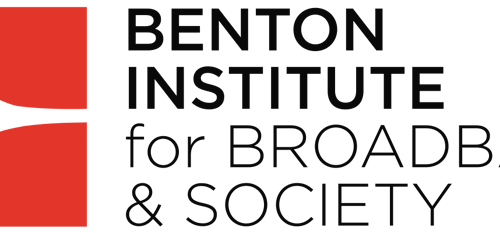Whether you are new to net neutrality and want to better understand the concept or a seasoned researcher who wants an update regarding open questions, I encourage you to read a recent working paper entitled, “Net Neutrality: A Fast Lane to Understanding the Trade-Offs,” by Shane Greenstein, Martin Peitz, and Tommaso Valletti, a group of economists with a track record researching and writing about Internet economics. Although the article is rather recent, I believe it presents a very good starting point for those interested in taking a deeper dive into both specific theoretical and general empirical issues revolving net neutrality.
In this blog post, I attempt to outline the article for perspective readers and provide a few potentially useful links. Although I abstract completely from the math and intuition behind the results, the article is extremely straightforward with this regard.
A good starting point for a discussion of net neutrality begins with an understanding of the uses of the Internet. As the authors see it, there are four relevant categories of use for the Internet:
- Static web browsing and e-mail (low bandwidth; can tolerate delay). Data flows are largely symmetric across users.
- Video downloading (high bandwidth; can tolerate delay).
- Voice-over IP, video-talk, video streaming and multi-player gaming (high bandwidth; quality declines with delay). Data flows are mostly unidirectional from content providers to users.
- Peer-to-peer applications (high bandwidth; can tolerate delay; can impose delay on others).
Although much economic research tends to abstract from the technical issues revolving use of the Internet, many studies of net neutrality implicitly model the third variant above and the authors follow suit. This makes up the bulk of modern Internet traffic: for instance, together, Netflix, Youtube, and Amazon Prime have consistently made up approximately 50 percent of all North American Internet traffic as of late.
There are three common arrangements for moving data from content providers to users:
- Move data over “backbone lines” (e.g., Level3) and then to local broadband data carriers (e.g., ISPs) where the user is located. This may entail relying on an ISP to get to the backbone line.
- Move traffic to servers located geographically close to users: CDNs (e.g., Akamai).
- “Collocate” servers inside the network of an ISP. Payment for collocation was at the heart of negotiations between Netflix and Comcast that put net neutrality in the limelight (see also, John Oliver’s response to Tom Wheeler and my tangential reference inspired by Oliver and T-Mobile CEO John Legere).
The authors focus on two definitions of net neutrality: (1) prohibition of payment from content providers to Internet service providers (referred to as one-sided pricing whereby ISPs can only charge consumers) and (2) prohibition of prioritization of traffic with or without compensation. As Johannes Bauer and Jonathan Obar point out, these are not the only alternatives for governing the Internet (see Bauer and Obar 2014). In a simple world with no competition and homogeneous users, the authors suggest that net neutrality does not affect profits or consumer surplus. A number of real world considerations are taken into account, and the potential ramification of imposing net neutrality are suggested as follows.
- Users and content providers are heterogeneous. In this case, pressure on one side of the market (between ISPs and content providers) can lead to a corresponding change in prices on the other side of the market (between ISPs and users).
- For instance, when content providers are identical but consumers are heterogeneous, allowing ISPs to charge termination fees to content providers can induce them to lower prices to consumers.
- On the other hand, when content providers are heterogeneous but consumers are identical, allowing ISPs to charge termination fees can induce inefficient content provider exit.
- Some content providers get money from advertising (e.g., Facebook and Google), others charge users directly (e.g., Netflix).
- The latter situation can complicate the analysis because ISP termination fees may directly impact downstream content prices.
- The situation is further complicated if content providers can endogenize their mix of advertising and direct revenue (e.g., Pandora).
- Competition differs across markets, with multiple ISPs in some markets and this is relevant for studying net neutrality (see Bourreau et al. 2015). I discuss data that could be used to gauge competition in broadband provision at the end of a prior blog post.
- Congestion, quality of service, and network and content investment can be impacted by regulation.
- Long term trade-offs depend on the competitive setting (e.g., horizontal competition, vertical integration).
- Peak (termination) pricing that might be forbidden under certain forms of net neutrality could lead to welfare-enhancing congestion reducing investment.
- Prioritization can lead to both, desirable or undesirable outcomes, and this depends on both ISP and content provider investment in congestion reduction (for instance, see Choi et al. 2014).
The authors caution against broad policy prescriptions, and rightly so, given the present ambiguity surrounding the impacts of net neutrality. Along the way, the authors inspire a number of open empirical questions that might help policy makers.
- How much would allowing or eliminating termination fees affect the price charged to subscribers?
- Which net neutrality regulations (when in place) have been binding in practice?
- How do net neutrality regulations impact investment in congestion reduction?
- Does competition alter the need for net neutrality regulation?
I suspect that the first two questions are fairly difficult to answer from an economics perspective because in large part they depend on significant insider knowledge about contracting among market participants. The Quello staff and I are presently contemplating how to rigorously answer questions (3) and (4). We are very interested in your feedback.



